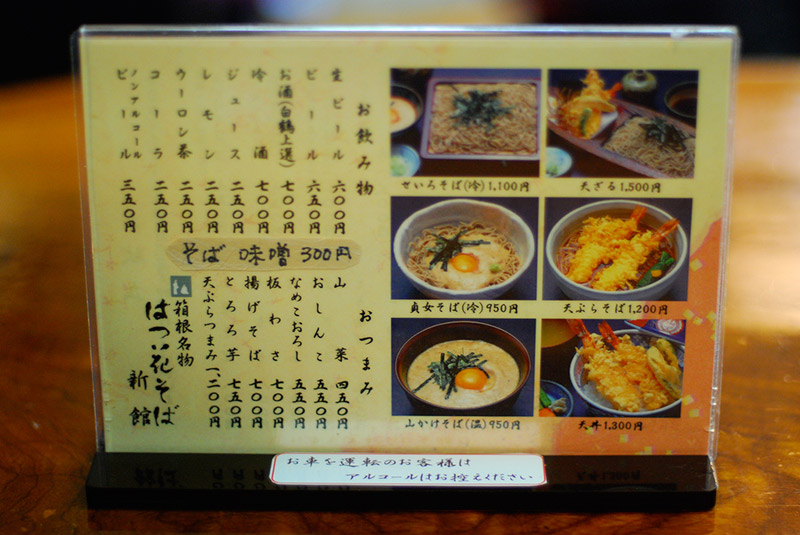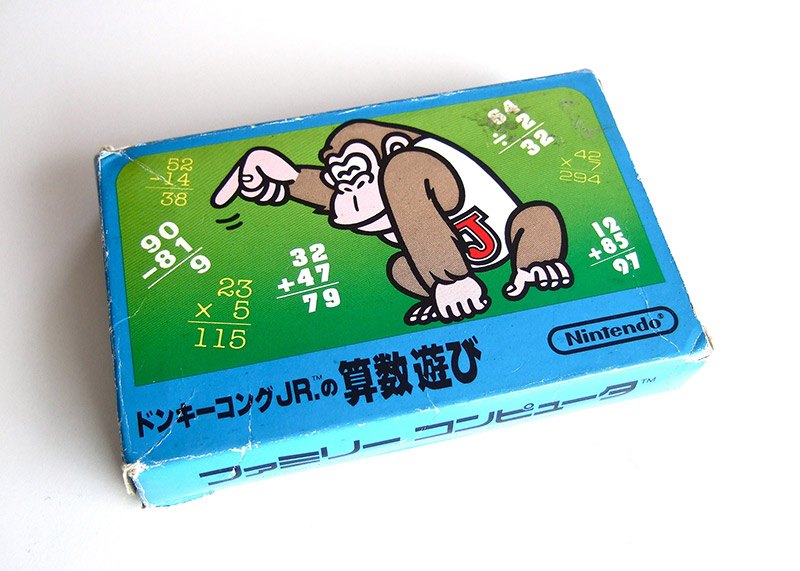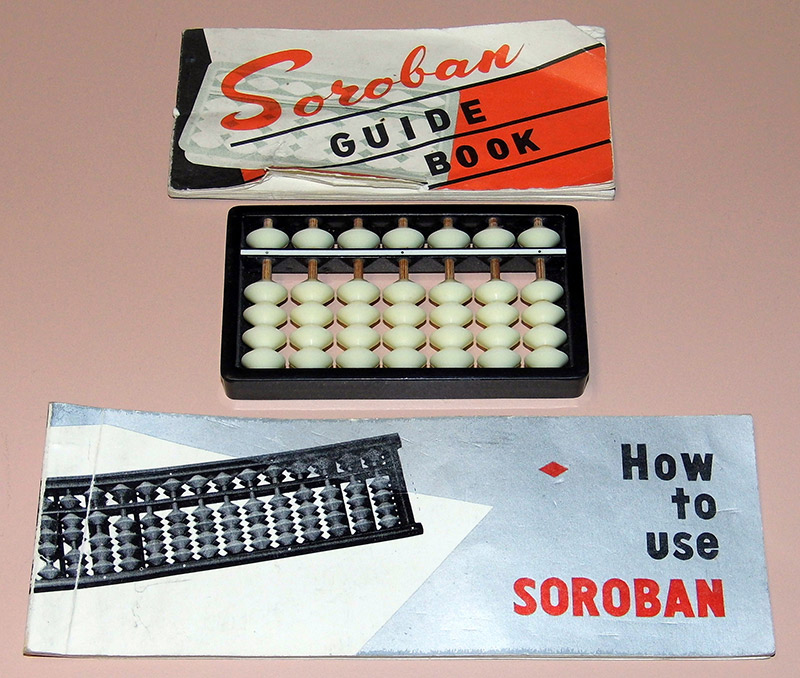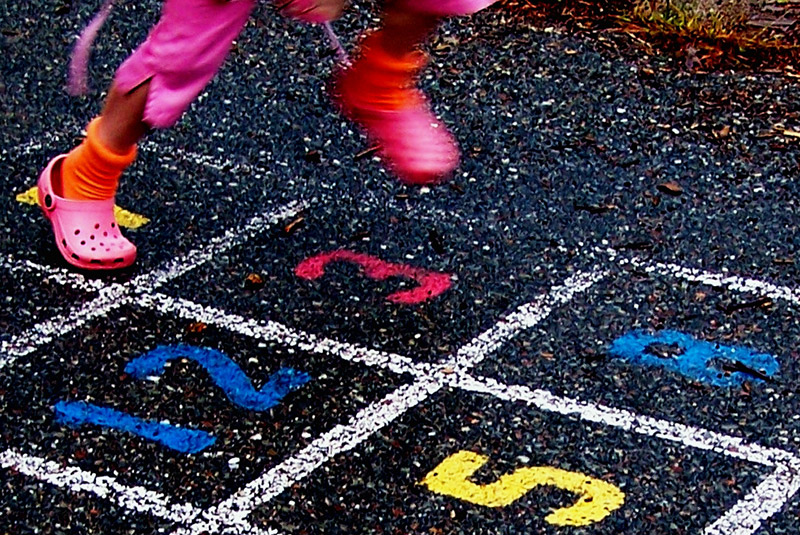Maths was never my strong suit at school. The numbers never danced into line for me. So I thought that trying to deal with numbers in a foreign language would be impossible. However, to my great surprise, dealing with numbers in Japanese was easier than I'd expected. This wasn't due to any genius on my part. It is entirely due to the genius of the Japanese counting system itself.
One, Two, Three, 一、二、三

At first, it is easy to be daunted by the Japanese counting system. Really, you shouldn't worry. You've already mastered a much more complicated number system. Counting in Japanese is much more logical and systematic than English. If you can get hold of the basics you'll soon be flying.
Let's have a look at those basics and what we can do with them.
1: 一 ichi
2: 二 ni
3: 三 san
4: 四 shi/yon
5: 五 go
6: 六 roku
7: 七 nana/shichi
8: 八 hachi
9: 九 ku
10: 十 juu
The first ten numbers. They aren't too daunting are they. Just ten numbers (twelve if you count the two alternate ways of saying 4 and 7.) It's worth learning the kanji too, if only so you can read prices in fancy soba restaurants. I don't know why, but the soba places near me always used the kanji numbers.
Now here is where Japanese has a huge advantage over English. The numbers from 11 to 99 all use the same sounds you've just leaned. Unlike English with its bizarre exceptions to its own rules. Eleven! What's that all about, huh?! Eleven! It doesn't sound anything like ten or one, or even twelve.
There are are so many exceptions that make the English counting system confusing, especially for young children. But look at the Japanese for 11, 十一 juu-ichi, ten-one. How beautiful! The same pattern continues. 21 is 二十一 ni-juu-ichi, two-ten-one. Once you get to 100, you only have to learn one more word, hyaku 百. Now you can count from 1 to 999 using the same system. 101 is 百一 hyaku-ichi. 241 is 二百四十一 ni-hyaku-yon-juu-ichi. The only thing you have to watch out for is the hyaku sound turning into byaku. To count from 1 to 9999, all you need is one more word, sen 千 which means thousand. 10,000 is man 万, and the same rules apply. If you are interested, 100,000,000 is oku 億, 1,000,000,000,000 is chō 兆, and 10,000,000,000,000,000 is kei 京.
If you're living in Japan, you'll find it very easy to practice counting all the way up into the thousands because it's so common when you go shopping. 1000 yen is only about 8 US dollars. As Japan is such a cash based society, you'll soon be dealing with numbers in the thousands and tens of thousands on a daily basis. When I bought my car in cash, I happily counted out the 万 and 千.
Sensible regular naming systems in Japanese mathematics extend beyond the numbers themselves. Shape names don't require you to study up on your Ancient Greek, like English ones do. Now, I'm a big nerd for English etymology, but there is something to be said for a simple system like this. To name a polygon in Japanese, all you have to do is count the sides and add that number to kakkei 角形 or kakukei 角形. So a triangle is sankakkei 三 角形, and an octagon is hachikakukei 八 角形. Admittedly, you will have to spend some time learning which pronunciation of 角形 goes with each number.
Do you know what an eleven sided shape is in English? Can you work out what it is in Japanese?
If you said, "hendecagon," and "juuichi kakukei 十一 角形" then I salute your knowledge. Which was easier to figure out?
Everybody Do the Kuku

The kuku is not a bird. It's a tool to learn multiplication tables. I remember struggling through my times tables at school. Even now I dread being asked to multiply numbers on the spot. This is not a fear that many Japanese people have. From the age of seven, children learn their times tables using the kuku chant. This covers the times tables up to 9×9, which is where the kuku gets its name. By learning the kuku by heart, Japanese children get a solid grounding for the rest of their exploration of mathematics. I've gone on about how regular the Japanese counting system is, but the kuku breaks from this trend. To fit the rhythm, many numbers are said in a simplified form. For example hachi is sometimes shortened to ha. Also, the kuku won't help you past 9×9. It surprised some Japanese teachers I know that Western students learn up to 12×12.
Still, if you'd like to try it yourself, there are many videos which use different rhythms or songs to help teach the kuku. I'd recommend downloading a version that you like and listening to it over and over again and try to sing along.
Memorising mathematical concepts comes up again later in Japanese children's education. In senior high school, they can be expected to memorise trig function tables, something that is unthinkable in the UK. The merits of memorising those can be debated, but without the training the kuku provides, it would be far more difficult. I wish that there was a sing-song equivalent to the kuku in English which I could have learned by heart. Recently, I've been trying to memorise the kuku and I have to say it's far more fun than I expected.
Could You Be a Soroban Master?

There is another tool that can help you improve your maths skills and this one is literally a tool. Soroban 算盤 is the Japanese abacus. You might be thinking, "Why is she suggesting I use an abacus?" You have a scientific calculator. Abacuses are so five centuries ago. But the soroban has the ability to turn you into a mental arithmetic magician.
The Japanese abacus is divided into two sections. The upper part has one bead and each represents 5 units. The lower part has four beads, each representing 1 unit. To read the abacus you only look at the beads that have been pushed into the middle of the abacus, resting against the dividing bar. It is read left to right. You can try it yourself using this virtual soroban.
Having a physical representation of numbers and actually moving beads makes using an abacus easier and more fun for children than simply working sums out on paper. The aim is to use the abacus combined with muscle memory to mechanise the process of arithmetic. A trained soroban user can complete calculations far faster than someone with an electronic calculator because they don't even need to think about the calculations. Using the soroban becomes automatic. Soroban schools are popular juku 塾, where children are trained in abacus skills after school. There is even an examined ranking system, just like in martial arts. I used to watch in amazement as the teacher who sat opposite me calculated huge sums on a soroban. Her fingers flicked across the beads at amazing speed. She also used it for adding up marks on tests. I was slower, clumsier, and less accurate doing the same thing on an electric calculator.
The greatest soroban users don't even need a soroban in front of them. This is called anzan soroban 暗算 そろばん or mental soroban. People who have mastered anzan soroban have internalised the abacus. They can see it in their mind's eye. If you watch someone calculating with anzan soroban sometimes you'll see their fingers flicking as if they were moving beads on their abacus, even with no abacus there. Students retain the mechanised aspect of soroban, so they don't have to consciously do the calculations to get the right answer. Watch this video of children playing shiritoi (a word game) and doing anzan soroban at the same time.
That's pretty mind boggling! But the most impressive form of anzan soroban is even more amazing. Flash anzan is an illustration of the extraordinary power of the human brain. Flash anzan was invented by soroban teacher Yoji Miyamoto as a game to stretch his students. In flash anzan 15 numbers between 100 and 999 are flashed on a screen. The challenge is to add them up in your head. OK, that sounds pretty tough, but doable, right? Well, the champions of flash anzan can do it in under 2 seconds. The 2012 champion of the All-Japan Flash Anzan competition, Takeo Sasano added the 15 three digit numbers in 1.70 seconds. Here is a video of the All-Japan National Soroban Championship in 2012 where contestants make the caluclation in 1.85 seconds.
This is the power of the soroban.
Maths Is More Fun in Japan

There are certainly complexities when dealing with numbers in Japan. Counting things, not just numbers brings you into the complex world of Japanese counters. All throughout this article I've been using the on'yomi reading of numbers (ichi, ni, san, etc.) not the kun'yomi reading (hitotsu, futsu, mittsu, etc.) which is a whole other challenge to master.
However, difficult or not, I believe there is something more important when it come to arithmetical success. That is attitude. When I asked my Japanese students what their favourite subject was there was a roughly 60/40 split between PE and maths. Japanese students are typically much more confident in mathematics than they are in English. While my maths teachers back home despaired at me, maths teachers in Japan liked me for some reason. I was often invited to maths class and teachers would try to explain things in English, much to the amusement of the students. In maths class I saw students, who I knew as shy and withdrawn, happily chatting away about mathematical concepts that were far beyond me. The attitude towards maths in Japan is far more positive than it is in the UK. Maths is something to play with in Japan. It's not surprising that Japan is the source of many of the world's most popular number games like sudoku.
While you and I might never achieve complete mathematical fluency in Japanese and be able to do massive calculations in under two seconds, we can learn not only maths in Japanese, but also Japan's positive attitude towards it.
